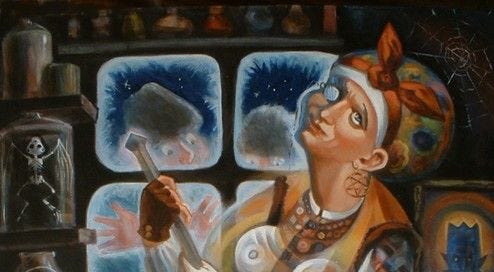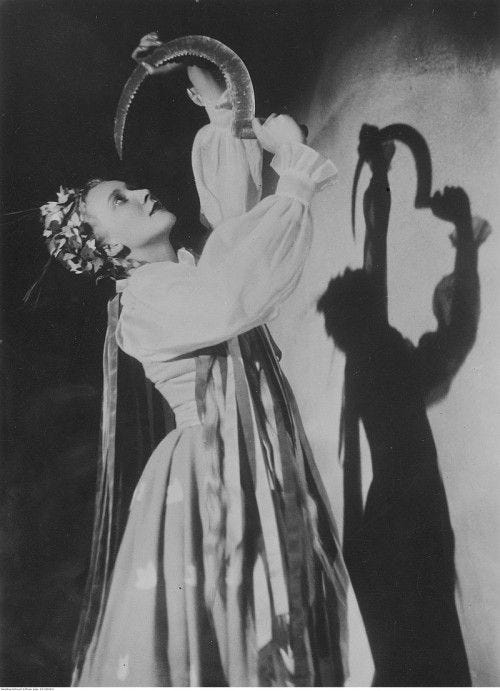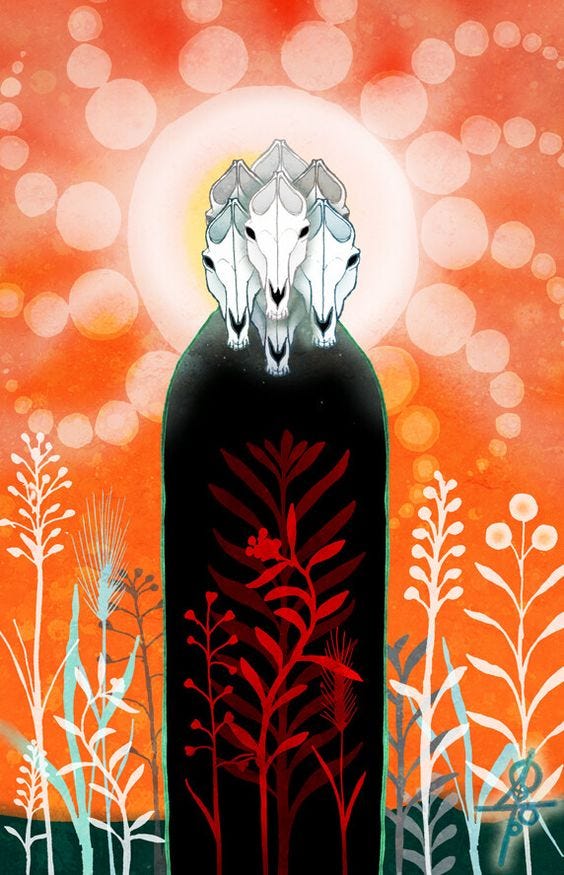The Art of Incantations
The connection between plants and the spoken word for healing and protection purposes in Slavic folk medicine is essential to understanding how healers worked. Many would say that the spoken word, spells, incantations, whatever you choose to call them are just as important as the plants themselves.
We see throughout Slavic folk culture that there are many medicinal plants, but they do not take on more “magical” qualities until they are blessed. The act of blessing imbues them with a higher level of potency. It was a way for healers to weave the ever present spirit world in with the tangible world. Every word, action, and element included in a healing ritual is meticulously considered.
This is actually a bit refreshing to consider as opposed to many modern herbalism practices where plants are bought from unknowable sources, ground together without an intentional thought, and bottled away without gratitude or simple blessing.
I’ve found the most potent remedies to be the ones where I interact with the plants myself. The remedies where the phase of the moon is taken into account, songs are sung over them, every thought channeled toward its purpose. But of course our ancestors have known this for centuries. Maybe this is a bit too woo-woo for some folks, but give it a try and see what you think for yourself.
So how exactly did the Slavs craft their incantations?
Poetics and Pragmatism
It truly is an art form. Researchers who studied such incantations divided them into three basic categories: healing/physical charms, relationship charms, or career-based charms. They combined the poetic with the practical to provide a means to an end.
In Ukraine, the babka-szeptuka or granny whisperers, still infuse incantations into their healing rituals which provided great sources for studying traditional Slavic folk healing.
The rituals through which they created or performed these incantations were either cleansing rituals where the afflicting energies would be banished by smoke or water, transferral where the energy was cast away via a physical object, and imaginative rituals through which physical actions and visualization were used to rid the negative energies.
Cleansing rituals are perhaps one of the rituals that is still popular today, though fumigation has been a huge part of Slavic folk culture for many generations. Burning herbs such as juniper, rosemary, thistle or other protective herbs along with incantations is a powerful combination. Cleansing the body with water also holds the same potency.
Transferral rituals are fascinating to me and I think is best described with an example. In Poland, one granny saw warts on her granddaughter's skin and told her to take as many peas as she had warts, go to the river, turn her back to it, speak a particular set of words, throw them away and come back without turning back. She reported all of the warts soon fell off.
In this instance, the peas were used because they resembled the warts and the amount must be an exact match. The second important part of this ritual was to throw them in the river without looking back. This represented the water carrying the warts off, making them fall away. Not turning back around would ensure that they would not return. On a more esoteric note, by turning away and leaving without looking back, the patient is also turning their back on the negative energies that exist behind us.
Imaginative rituals often involve plants as well. In many instances, it was recorded that if a couple was having marital troubles, they were told to pour water (representing their marital strife) under an elder bush (a plant of great power in Slavic lore) while reciting a particular incantation. This physical action of pouring water in a particular space helped embody the change they wished to see.
Incantation Structure
Charm structure varied but typically consisted of: an invocation or opening, an exposition where the affliction was described along with mention of important deities, magic helpers, and what actions were to be performed, expulsion where the negative energies would be banished to other realms, and a ratification or closing of the ritual.
Incantations could also be short but powerful rituals. For protection, folks in Russia would draw three circles around themselves during the new year and simply say “demons do not cross this line”.
There were more symbolic incantations that called upon cultural lore to create a cohesive spell. In one instance, a ritual to staunch blood flow was recorded as
“the horse is young, the man is old. You, red one (the blood), stop, flow no more from ___(name)”.
While these may seem simple, there is always more to Slavic folk magic than meets the eye. If we examine the last charm closer, we can recall an old folk legend where a powerful deity road his bay steed across a bridge where the horse stumbles and breaks its leg. The deity charms it hole again.
While this incantation is about blood, the invocation we just dissected was also often used in bone setting rituals. Oftentimes, a maiden seamstress was invoked for wound healing or blood staunching charms. In this charm though, the strength of the steed and the longevity of the deity are invoked in the mind of the patient. This puts the patient in a positive mindset, a space they need to be in to heal. When the healer then makes their demands, healing is more probable.
Another short but powerful blood staunching incantation was recorded as
“across the Black Sea flies a raven. It bears a silken thread; you thread break off, and you blood, stop.”
The image of the mysterious raven represents death and the dead do not bleed. The Black Sea is typically depicted as a magical place in Slavic lore where miracles can occur and negative energies will have no way to find their way back. The silken thread is likened to the blood vessel, but the comparison makes it seem much more profound and mystical. All of these elements put together creates a story that gives voice to the patient and the problem, while also offering a solution.
Incantation Comparison and Clusters
The structure of the incantation was a key element. Comparisons were essential in the incantation as they must have acted as the vehicle for transferal of the energies. Clusters, or repeating certain elements was also important as we know the Slavs gave power to certain numbers. For example, let’s analyze this incantation for broken bones:
“bone to bone, blood to blood, vein to vein, limb to limb, flesh to flesh, may they be joined again” (compositional clusters), “just as the corpse feels no pain, so shall Rod’s servant not ache” (comparison).
The first line repeats five different words, two times each. This probably helped to reinforce the power of the charm. The second line compares the painless state of the corpse to the intention of the afflicted to also feel no pain. These comparisons are perfect for transferring the power of good energies into the afflicted or banishing bad energies out of the afflicted and into a different space entirely.
Another example of the comparison element in Slavic incantations can be seen in Montenegrin lore. When a male child was born, the midwife would announce:
“Hear; folk and people! The she-wolf has borne a wolf, to the knowledge of the whole world, and to the health of the child!”
Here, the midwife compares the mother and child to wolves, which were associated with strength, health and survival. By doing so, they meant to use the idea of transferral to imbue the newborn and mother with the vitality of the wolf.
We could of course go on and on examining different incantations (maybe we will do more in future newsletters), but you get the general gist. When we incorporate intention, lore, structure, action, symbolism and a bit of poetry into our healing practices, we are given many more tools through which to balance the body, mind and spirit.
References
Conrad, Joseph L. “Russian Ritual Incantations: Tradition, Diversity, and Continuity.” The Slavic and East European Journal, vol. 33, no. 3, 1989, pp. 422–44. JSTOR, https://doi.org/10.2307/308729. Accessed 19 Apr. 2023.
GRMEK, MIRKO DRAZEN. “Ancient Slavic Medicine.” Journal of the History of Medicine and Allied Sciences, vol. 14, no. 1, 1959, pp. 18–40. JSTOR, http://www.jstor.org/stable/24620921. Accessed 21 Apr. 2023.
Ostling, Michael. “Witches’ Herbs on Trial.” Folklore, vol. 125, no. 2, 2014, pp. 179–201. JSTOR, http://www.jstor.org/stable/43297753. Accessed 28 June 2023.
Plas, Pieter & Yudin, Aleksey. (2010). Aspects of Historical Poetics and Pragmatics of Slavic Charms. Folklorica. 14. 10.17161/folklorica.v14i0.3815.







